White Flags by Aaron Fein from Aaron Fein on Vimeo.
Month: May 2020
Sweden is still nowhere near ‘herd immunity,’ even though it didn’t go into lockdown
Niamh Kennedy at CNN:
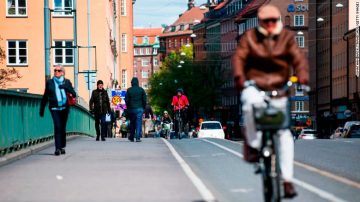 Sweden has revealed that despite adopting more relaxed measures to control coronavirus, only 7.3% of people in Stockholm had developed the antibodies needed to fight the disease by late April.
Sweden has revealed that despite adopting more relaxed measures to control coronavirus, only 7.3% of people in Stockholm had developed the antibodies needed to fight the disease by late April.
The figure, which Sweden’s Public Health Authority confirmed to CNN, is roughly similar to other countries that have data and well below the 70-90% needed to create “herd immunity” in a population.
It comes after the country adopted a very different strategy to stop the spread of coronavirus to other countries by only imposing very light restrictions on daily life.
Sweden’s chief epidemiologist Anders Tegnell said the number was a “little lower” than expected “but not remarkably lower, maybe one or a couple of percent.”
More here.
Leonora Carrington: The Lost Surrealist
https://www.youtube.com/watch?v=SxEF1bjgt5Q
Strange Miracles in the Desert
Julie Morse at The Believer:
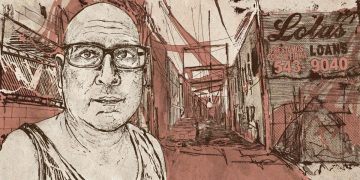 For a heroin addict, Ciudad Juárez is Mecca. It’s cheap, drug possession charges result in just a couple of nights in jail, and the ability to earn U.S. currency by begging or doing odd jobs in El Paso significantly increases a person’s buying power in Mexico. These are things Comar learned after he abandoned his trucker job and moved from New York to Juárez in 1998. It’s also what several U.S. citizens who suffer from long-term addiction have told me makes Juárez the perfect place to live. And there’s no reason why they’d ever want to go back.
For a heroin addict, Ciudad Juárez is Mecca. It’s cheap, drug possession charges result in just a couple of nights in jail, and the ability to earn U.S. currency by begging or doing odd jobs in El Paso significantly increases a person’s buying power in Mexico. These are things Comar learned after he abandoned his trucker job and moved from New York to Juárez in 1998. It’s also what several U.S. citizens who suffer from long-term addiction have told me makes Juárez the perfect place to live. And there’s no reason why they’d ever want to go back.
“I thought the border was really a great chance to redefine myself and rearticulate my identity,” Comar tells me. “I wanted to cash in my old life because I wasn’t happy with it anymore, and I wanted to get a new life. Becoming something new is the essence of recovery.”
more here.
“Michael Kohlhaas,” the Book That Made the Novel Modern
Dustin Illingworth at The New Yorker:
 “Michael Kohlhaas,” which was recently reissued by New Directions in a sparkling new translation from Michael Hofmann, makes for a fine entry point into Kleist’s passionate, grotesque, hysterical, and deeply strange body of work. It begins, as it ends, in bureaucratic entanglement. Kohlhaas, en route to a Leipzig marketplace, is stopped by a castellan in the employ of the knight Wenzel von Tronka, who demands to see a travel permit. Lacking the necessary visa, Kohlhaas is coerced into leaving two of his finest horses as collateral, along with his trusty groom to watch over them. While passing through Dresden, he learns from a government notary that the permit is in fact a fairy tale. As so often occurs in “Michael Kohlhaas,” the law is invoked only to be disfigured by human cupidity. The castellan is merely an avatar, the first of several figures whose knowledge of the law allows them to shape or pervert it for private aims. Kleist introduces the self-serving technocratic interpreter to modern literature.
“Michael Kohlhaas,” which was recently reissued by New Directions in a sparkling new translation from Michael Hofmann, makes for a fine entry point into Kleist’s passionate, grotesque, hysterical, and deeply strange body of work. It begins, as it ends, in bureaucratic entanglement. Kohlhaas, en route to a Leipzig marketplace, is stopped by a castellan in the employ of the knight Wenzel von Tronka, who demands to see a travel permit. Lacking the necessary visa, Kohlhaas is coerced into leaving two of his finest horses as collateral, along with his trusty groom to watch over them. While passing through Dresden, he learns from a government notary that the permit is in fact a fairy tale. As so often occurs in “Michael Kohlhaas,” the law is invoked only to be disfigured by human cupidity. The castellan is merely an avatar, the first of several figures whose knowledge of the law allows them to shape or pervert it for private aims. Kleist introduces the self-serving technocratic interpreter to modern literature.
more here.
Look, don’t touch: what great literature can teach us about love with no contact
Joanna Briscoe in The Guardian:
 In our time of social distancing, the desire for physical contact has never been so intense. And yet we are untouchable. This experience has had its more conspicuous consequences, such as the government scientist Neil Ferguson breaking his own rules to meet his lover during lockdown. This notion of forbidden touch, unique and even shocking as it may be to us, has a multitude of echoes in literature. Cultural constraints and taboos on touch are reflected, overturned or used for dramatic purposes by writers throughout history, and our own bookshelves are newly rich with the comfort of identification. Who would have ever guessed that the plague-ridden, the apocalyptic or the edicts of Victorian England would have quite such resonance?
In our time of social distancing, the desire for physical contact has never been so intense. And yet we are untouchable. This experience has had its more conspicuous consequences, such as the government scientist Neil Ferguson breaking his own rules to meet his lover during lockdown. This notion of forbidden touch, unique and even shocking as it may be to us, has a multitude of echoes in literature. Cultural constraints and taboos on touch are reflected, overturned or used for dramatic purposes by writers throughout history, and our own bookshelves are newly rich with the comfort of identification. Who would have ever guessed that the plague-ridden, the apocalyptic or the edicts of Victorian England would have quite such resonance?
The sensual is, of course, as much enhanced by restraint as diminished by it, and the whole canon of forbidden, throbbing longing in literature contains particular potency in the present. Often by necessity, desire is all, and consummation, if it ever happens, can be secondary in impact to the distanced gazes, tiny brushes and glances that precede it. Little is as sexy, or as frustrating, as restricted touch. A physical gesture, however slight, is more often a turning point for characters than anything spelled out in dialogue. This was summed up by Iris Murdoch in The Black Prince: “Only take someone’s hand in a certain way, even look into their eyes in a certain way, and the world is changed forever.” Keats wrote that “touch has a memory”, and the anticipation or the recollection of the physical is often where the excitement, fervour and true poetry lie. As Emily Dickinson expressed it: “Within its reach, though yet ungrasped / Desire’s perfect Goal – / No nearer – lest the Actual – / should disenthrall my soul – ”
More here.
Can words do the dead justice?
Ann Wroe in More Intelligent Life:
 Casual readers of obituaries or listeners to eulogies often instinctively focus on the odder bits. Life, after all, is elemental, quicksilver, strange; it isn’t found in a solemn list of doings and accomplishments, lists of schools attended or prizes won. People like to know about the quirks of the individual who has gone – the jam-jar collection, the clashing clothes, the unwise taste for speed. They want to laugh in the face of death and rejoice in the richness of life. At the same time death, being surrounded by grief, lays on its cold hand and demands respect. How, then, to memorialise the departed?
Casual readers of obituaries or listeners to eulogies often instinctively focus on the odder bits. Life, after all, is elemental, quicksilver, strange; it isn’t found in a solemn list of doings and accomplishments, lists of schools attended or prizes won. People like to know about the quirks of the individual who has gone – the jam-jar collection, the clashing clothes, the unwise taste for speed. They want to laugh in the face of death and rejoice in the richness of life. At the same time death, being surrounded by grief, lays on its cold hand and demands respect. How, then, to memorialise the departed?
The more public the forum, the more treacherous the minefield. Those useful mourning-rites of the Victorians – black armbands, black ribbons tied on door-knockers, black-edged announcement cards – have more or less vanished now, together with their shared view of what death was. Yet, in our nervousness, we still fall back on the formulas we know. In particular, we tend to keep a stiff-collar formality in the words we use. No letter is harder to write than one of condolence. Every week my local paper runs a half-page of black-rimmed death notices in which someone from a family has dutifully struggled to write a poem about love and loss. They are awkward, poignant and truly heartfelt; most use similar phrases about the grieving left behind. The loud message of these little boxes is that words must be written, but they fail. Most obviously, they do not last. And it seems that something should. The physical presence we knew in the world has to be marked with an object that is solid and individual – most simply a stone, like the cairns of achievement on top of hills we have climbed. The powerful had such markers, from the turfed tumuli of ancient warriors, crammed with daggers and warhorses, to the chest-tombs and weeping-angel memorials of the Victorians. Yet for centuries the poor were buried unmarked around their worship-places, higgledy-piggledy and one above the other until the churchyards rose like green cushions. The dead had left the world, but remained in it: part of the community, part of the natural scene.
More here.
Friday Poem
Everywhere a River
I do remember darkness, how it snaked
through the alders, their ashen flanks
in our high-beams the color of stone.
That hollow slap as floodwater hit
the sides of the car. Was the radio on?
Had I been asleep?
Sometimes you have to tell a story
your entire life to get it right.
Twenty-two and terrified, I had married you
but barely knew you. And for forty years
I’ve told this story wrong. In my memory
you drove right through it, the river
already rising on the road behind us,
no turning around.
But since your illness I recall it
differently. Now that I know it’s possible
to lose you, I’m finally remembering
it right. That night,
you threw that car in reverse,
and gunned it. You found us
another way home.
by Emily Ransdell
from New Letters , (Vol. 86, 2019)
There Is No Writer Quite Like Arundhati Roy
Joel Whitney in Jacobin:
 It’s possible to mark time in Indian politics by how long it’s been since Arundhati Roy has pissed off the government. Her meticulous, two-decades-long dissection of India’s unsustainable development, its Islamophobic Hindu nationalism and caste violence, alongside the United States’ pursuit of global empire has been proven accurately, darkly predictive.
It’s possible to mark time in Indian politics by how long it’s been since Arundhati Roy has pissed off the government. Her meticulous, two-decades-long dissection of India’s unsustainable development, its Islamophobic Hindu nationalism and caste violence, alongside the United States’ pursuit of global empire has been proven accurately, darkly predictive.
When India’s December law restricting Muslim citizenship passed, readers of Roy’s essays had a framework, going back two decades, within which to place these developments. By midwinter, Muslims were being beaten and lynched in the streets of the capital. This was shocking but not unprecedented, and readers of her essays recalled her warnings over mass killings in Gujarat in 2002, an early flashpoint that she describes explicitly as a contemporary genocide.
Roy is known for two musical and beautifully complex novels. The Ministry of Utmost Happiness was longlisted for the Booker Prize in 2017; her debut, The God of Small Things, won that prize twenty years before. Last summer, to more muted fanfare, her essays were collected in an eight-hundred-plus-page edition by Haymarket Books called My Seditious Heart. As Roy approaches fifty-nine, the three books add up to a major literary achievement.
More here.
Graduate Student Solves Decades-Old Conway Knot Problem
Erica Klarreich in Quanta:
 In the summer of 2018, at a conference on low-dimensional topology and geometry, Lisa Piccirillo heard about a nice little math problem. It seemed like a good testing ground for some techniques she had been developing as a graduate student at the University of Texas, Austin.
In the summer of 2018, at a conference on low-dimensional topology and geometry, Lisa Piccirillo heard about a nice little math problem. It seemed like a good testing ground for some techniques she had been developing as a graduate student at the University of Texas, Austin.
“I didn’t allow myself to work on it during the day,” she said, “because I didn’t consider it to be real math. I thought it was, like, my homework.”
The question asked whether the Conway knot — a snarl discovered more than half a century ago by the legendary mathematician John Horton Conway — is a slice of a higher-dimensional knot. “Sliceness” is one of the first natural questions knot theorists ask about knots in higher-dimensional spaces, and mathematicians had been able to answer it for all of the thousands of knots with 12 or fewer crossings — except one. The Conway knot, which has 11 crossings, had thumbed its nose at mathematicians for decades.
Before the week was out, Piccirillo had an answer: The Conway knot is not “slice.” A few days later, she met with Cameron Gordon, a professor at UT Austin, and casually mentioned her solution.
More here.
George Monbiot Debunks Michael Moore’s “Planet of the Humans”
We’re Not in This Together
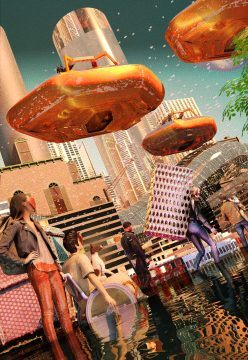 Ajay Singh Chaudhary in The Baffler:
Ajay Singh Chaudhary in The Baffler:
Over the past decade and a half, major insurance companies like AIG and Chubb have begun to offer private emergency services “to elite policyholders.” It is one of the more straightforward ways to think about the commodification of risk. Highly expensive assets face catastrophic threat; the insurance company packages that threat and sells two attractive products. The first is insurance against climate damage; the second is access to services to prevent having to pay out when damage occurs. From the firm’s point of view, they’ve sold two products at a tidy profit and avoided the exorbitant payout involved with actually covering insured losses. From the client’s point of view, despite a steep cost, the financial and psychological burden of losing their home is avoided. For these two parties, it is, indeed, a win-win scenario.
However, there are “externalities,” so to speak, in privatized social services. Such private services skirt or run right over what tiny regulations exist for them. They physically impede and complicate public emergency services. Protecting assets can be at odds with saving lives. And the same companies lobby for tax and infrastructure policies that necessitate their services, starving the public emergency service which, in the case of California, deploys severely underpaid incarcerated people to enhance dwindling state capacity. Although insurance companies and the emergency service contractors themselves focus on the high-end market, they are increasingly creating more affordable, less comprehensive packages for lower tiers of customers. This kind of tiered access to services is familiar to anyone who has encountered private or privatized social goods, like market-based health insurance. And yet it is also an extreme intensification, where there is seemingly no obstacle to privatized governance. In this example, we can see one microcosm of what I call right-wing climate realism.
More here.
What if Hillary had never married Bill? ‘Rodham’ answers that question
Elizabeth Toohey in The Christian Science Monitor:
 Hillary Rodham Clinton is a Rorschach test for our culture, as she herself has noted. In the 1980s as first lady of Arkansas, she was thought to have weakened Bill Clinton’s campaign as an incumbent by keeping her maiden name, so she took his. When his affair with Monica Lewinsky in the White House was revealed in the 1990s, Hillary’s popularity soared for standing by her man. Twenty years later, she was reviled for the same decision and called an enabler. She earned high approval ratings as a senator and as secretary of state, but her popularity plummeted when she ran for higher office. Curtis Sittenfeld’s novel “Rodham” poses the fascinating question: How would we feel about Hillary without Bill? For Sittenfeld, the answer is complicated. Some may dismiss Hillary’s political career as hinging on her husband’s, but as anyone familiar with her record at Wellesley College and Yale Law School knows, she was by all accounts a brilliant, outspoken student – and “Rodham” opens with the graduation speech she gave at Wellesley that propelled her to public notice .
Hillary Rodham Clinton is a Rorschach test for our culture, as she herself has noted. In the 1980s as first lady of Arkansas, she was thought to have weakened Bill Clinton’s campaign as an incumbent by keeping her maiden name, so she took his. When his affair with Monica Lewinsky in the White House was revealed in the 1990s, Hillary’s popularity soared for standing by her man. Twenty years later, she was reviled for the same decision and called an enabler. She earned high approval ratings as a senator and as secretary of state, but her popularity plummeted when she ran for higher office. Curtis Sittenfeld’s novel “Rodham” poses the fascinating question: How would we feel about Hillary without Bill? For Sittenfeld, the answer is complicated. Some may dismiss Hillary’s political career as hinging on her husband’s, but as anyone familiar with her record at Wellesley College and Yale Law School knows, she was by all accounts a brilliant, outspoken student – and “Rodham” opens with the graduation speech she gave at Wellesley that propelled her to public notice .
By turns historical fiction, fan fiction, and a novel of manners, Sittenfeld’s portrait imagines how things might have been had Hillary said no to Bill’s proposal of marriage. It’s a peculiar fantasy, but one that will resonate with readers who think Hillary got a raw deal, both in her marriage and in the coverage of her 2016 presidential bid.
More here.
What Do New Neurons in the Brains of Adults Actually Do?
Ashley Yeager in The Scientist:
 In the spring of 2019, neuroscientist Heather Cameron set up a simple experiment. She and her colleagues put an adult rat in the middle of a plastic box with a water bottle at one end. They waited until the rat started drinking and then made a startling noise to see how the animal would respond. The team did this repeatedly with regular rats and with animals that were genetically altered so that they couldn’t make new neurons in their hippocampuses, a brain region involved in learning and memory. When the animals heard the noise, those that could make new hippocampal neurons immediately stopped slurping water and looked around, but the animals lacking hippocampal neurogenesis kept drinking. When the team ran the experiment without the water bottle, both sets of rats looked around right away to figure out where the sound was coming from. Rats that couldn’t make new neurons seemed to have trouble shifting their attention from one task to another, the researchers concluded.
In the spring of 2019, neuroscientist Heather Cameron set up a simple experiment. She and her colleagues put an adult rat in the middle of a plastic box with a water bottle at one end. They waited until the rat started drinking and then made a startling noise to see how the animal would respond. The team did this repeatedly with regular rats and with animals that were genetically altered so that they couldn’t make new neurons in their hippocampuses, a brain region involved in learning and memory. When the animals heard the noise, those that could make new hippocampal neurons immediately stopped slurping water and looked around, but the animals lacking hippocampal neurogenesis kept drinking. When the team ran the experiment without the water bottle, both sets of rats looked around right away to figure out where the sound was coming from. Rats that couldn’t make new neurons seemed to have trouble shifting their attention from one task to another, the researchers concluded.
…The study joins a growing body of work that challenges the decades-old notion that the primary role of new neurons within the adult hippocampus is in learning and memory. More recently, experiments have tied neurogenesis to forgetting, one possible way to ensure the brain doesn’t become overloaded with information it doesn’t need, and to anxiety, depression, stress, and, as Cameron’s work suggests, attention. Now, neuro-scientists are rethinking the role that new neurons, and the hippocampus as a whole, play in the brain.
More here.
Thursday Poem
Untitled
Standing in line, waiting to go into the Library of Congress
a black woman stands two people ahead of me and
a white security guard says to her,
It’s a beautiful day.
She nods, Yes, it is.
and turns to the front.
He does not move.
He says, If it’s such a beautiful day,
why aren’t you smiling?
She does not answer and the white people in line
do not notice
but she and I,
we hold our breaths and stand
very still.
The guard walks closer
into her
space and demands,
Smile.
She does not.
In the silence, we hear blood
staining the concrete steps.
Smile.
Read more »
Brian Eno – New Space Music
https://www.youtube.com/watch?v=-dikWB6wm0A
On Kathryn Hahn
Philippa Snow at The Point:
 While there is no doubt that some version of the actress Kathryn Hahn existed prior to 2013, it seems to me to be appropriate to say that Kathryn Hahn the way we know her best—Hahn the bohemian horndog, the self-loathing yummy mummy with a graduate degree in English literature—made her onscreen debut that year in Afternoon Delight, a minor indie with some major hang-ups about sex work. Written and directed by Jill Soloway, the movie takes the unimaginative trope of a mid-lifer being reinvigorated by a young, hot and eccentric blonde, and makes it roughly 50 percent more intriguing by ensuring that the one having the midlife crisis is in fact a woman: Rachel, a bored stay-at-home mom who was once a jobbing writer, takes her husband to a strip club in the hopes that seeing other women naked might convince them to get naked with each other. Trying too hard to seem chill, she gets a lap dance from McKenna, a blonde, barely-legal stripper played by Juno Temple in the key of Paris Hilton. Hahn, as Rachel, plays the scene with four distinct moods: terrified, aroused, surprised to be aroused, and slightly dazed. Some psychic shift occurs, minor but vital to the plot.
While there is no doubt that some version of the actress Kathryn Hahn existed prior to 2013, it seems to me to be appropriate to say that Kathryn Hahn the way we know her best—Hahn the bohemian horndog, the self-loathing yummy mummy with a graduate degree in English literature—made her onscreen debut that year in Afternoon Delight, a minor indie with some major hang-ups about sex work. Written and directed by Jill Soloway, the movie takes the unimaginative trope of a mid-lifer being reinvigorated by a young, hot and eccentric blonde, and makes it roughly 50 percent more intriguing by ensuring that the one having the midlife crisis is in fact a woman: Rachel, a bored stay-at-home mom who was once a jobbing writer, takes her husband to a strip club in the hopes that seeing other women naked might convince them to get naked with each other. Trying too hard to seem chill, she gets a lap dance from McKenna, a blonde, barely-legal stripper played by Juno Temple in the key of Paris Hilton. Hahn, as Rachel, plays the scene with four distinct moods: terrified, aroused, surprised to be aroused, and slightly dazed. Some psychic shift occurs, minor but vital to the plot.
more here.
The End of Meat Is Here
Jonathan Safran Foer at the NYT:
 Some of the most thoughtful people I know find ways not to give the problems of animal agriculture any thought, just as I find ways to avoid thinking about climate change and income inequality, not to mention the paradoxes in my own eating life. One of the unexpected side effects of these months of sheltering in place is that it’s hard not to think about the things that are essential to who we are.
Some of the most thoughtful people I know find ways not to give the problems of animal agriculture any thought, just as I find ways to avoid thinking about climate change and income inequality, not to mention the paradoxes in my own eating life. One of the unexpected side effects of these months of sheltering in place is that it’s hard not to think about the things that are essential to who we are.
We cannot protect our environment while continuing to eat meat regularly. This is not a refutable perspective, but a banal truism. Whether they become Whoppers or boutique grass-fed steaks, cows produce an enormous amount of greenhouse gas. If cows were a country, they would be the third-largest greenhouse gas emitter in the world.
more here.
America’s Patchwork Pandemic: The coronavirus is coursing through different parts of the U.S. in different ways, making the crisis harder to predict, control, or understand
Ed Yong in The Atlantic:
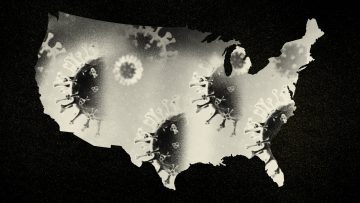 There was supposed to be a peak. But the stark turning point, when the number of daily COVID-19 cases in the U.S. finally crested and began descending sharply, never happened. Instead, America spent much of April on a disquieting plateau, with every day bringing about 30,000 new cases and about 2,000 new deaths. The graphs were more mesa than Matterhorn—flat-topped, not sharp-peaked. Only this month has the slope started gently heading downward.
There was supposed to be a peak. But the stark turning point, when the number of daily COVID-19 cases in the U.S. finally crested and began descending sharply, never happened. Instead, America spent much of April on a disquieting plateau, with every day bringing about 30,000 new cases and about 2,000 new deaths. The graphs were more mesa than Matterhorn—flat-topped, not sharp-peaked. Only this month has the slope started gently heading downward.
This pattern exists because different states have experienced the coronavirus pandemic in very different ways. In the most severely pummeled places, like New York and New Jersey, COVID-19 is waning. In Texas and North Carolina, it is still taking off. In Oregon and South Carolina, it is holding steady. These trends average into a national plateau, but each state’s pattern is distinct. Currently, Hawaii’s looks like a child’s drawing of a mountain. Minnesota’s looks like the tip of a hockey stick. Maine’s looks like a (two-humped) camel. The U.S. is dealing with a patchwork pandemic.
More here.
A Photographer Captures the Bizarre and Idiosyncratic Collections Displayed in Belgian Windows
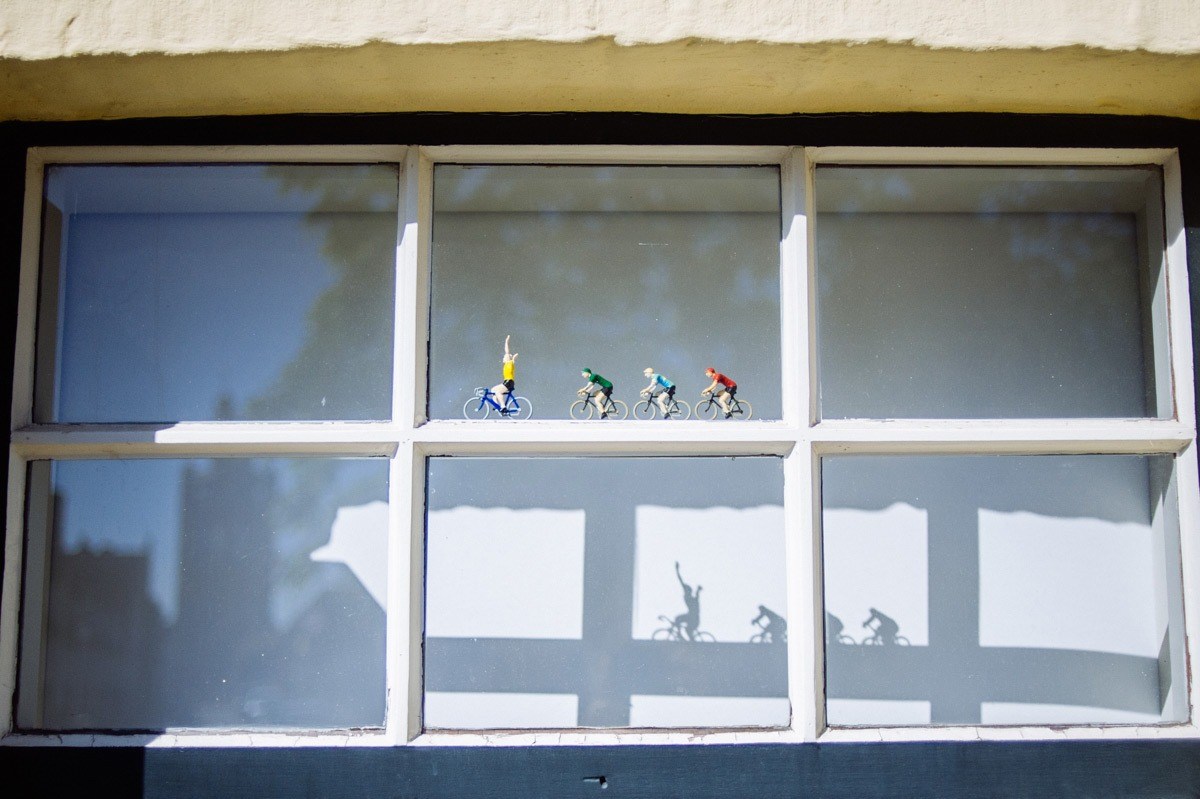
Grace Ebert in This Is Colossal:
When photographer Jean-Luc Feixa moved from Toulouse to Brussels, he began noticing the cultural, linguistic, and architectural differences between the two cities. “It may seem anecdotal,” he tells Colossal, “but the windows here are much larger than in France and easily disclose the house interiors.”
On his commute, Feixa often would pass the glass openings displaying robust collections, family mementos, and items for sale. “One day, I came across a group of children who seemed to be fascinated by a LEGO construction. It was quite captivating to see them commenting on this installation for many minutes. That was the trigger,” he says.
More here.
